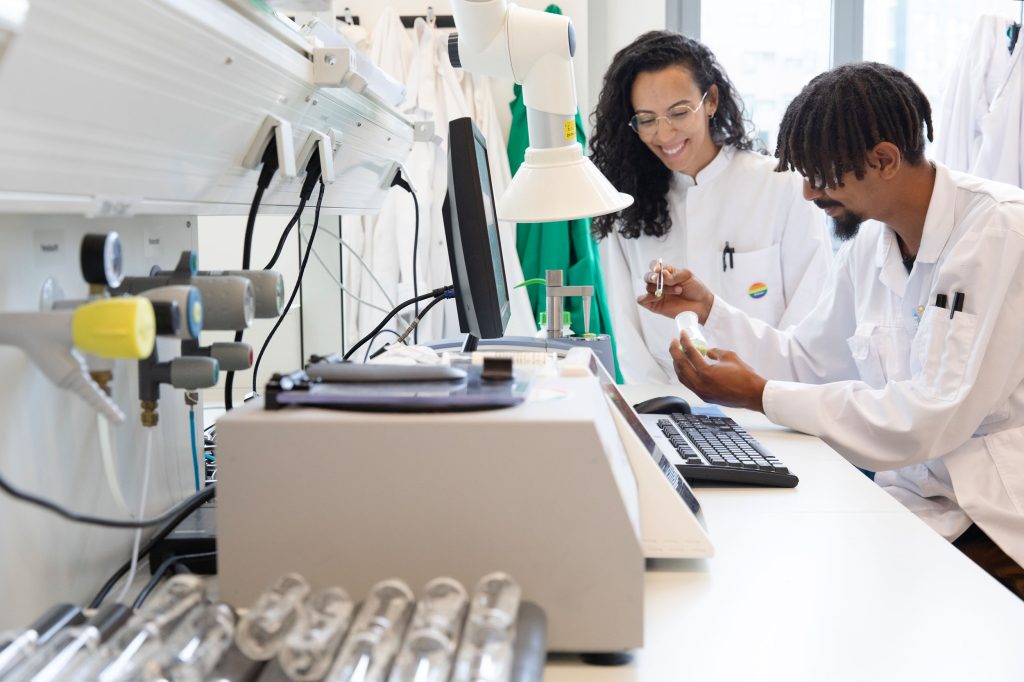
MNEXT, Avans, Curio, and their project partners have come together to launch a new research initiative in early 2024: ‘Green EGCh – Green Energy Raw Materials & Chemistry’. This initiative is dedicated to developing practical tools for the transition to green chemistry. The project will include the creation of a campus outfitted with advanced equipment tailored for green chemistry, providing a space for everyone to conduct research, work, study, and gain hands-on experience. A Learning Community is also being established to facilitate the exchange of knowledge about green chemistry among stakeholders in the West Brabant region. The project involves crafting a strategic research agenda that aligns vocational schools, universities of applied sciences, and the broader community. Furthermore, a versatile educational offering is being prepared, targeting not only students and working professionals but also individuals looking to change careers.
“The ambitions are significant, and we need everyone and everything to achieve them, but the joint task is proportionate,” explain Ralph Simons, director of MNEXT – Centre of Expertise for materials and energy transition – and Sanne Jongejan, director of the Engeneering & Technology sector at Curio. “Individually, we have all already achieved impressive results, but to really make a (lasting) difference, we need to combine the strengths of various organizations.”
Both executives are referring to the recently launched program Green EGCh – Green Energy Raw Materials & Chemistry, an intensive collaboration between Avans, Curio, and industry partners, supported by the European Just Transition Fund. Ralph continues: “For our institutions, the main objective in the materials and energy transition, and thus in this program, is to prepare more and better (future) professionals for these transitions through practice-oriented research and education. We are training for professions and skills that don’t quite exist yet.”
Green Tech Campus
Practice-oriented research is a crucial tool for aligning the supply and demand of human capital in the West Brabant region. Experience over the past years has shown that collaborating on research projects with regional businesses enhances the innovation capacity of both vocational education and businesses. As a knowledge institution, we facilitate the industry with expertise, access to facilities, and grants. Together, we develop expertise that can be directly used by the business sector. But we also learn what new skills young professionals need to acquire. “By involving students in research and integrating new knowledge into the curriculum, you continuously update the educational offerings,” Sanne says.
The program includes setting up a new facility that connects various pieces of the puzzle. Different labs and disciplines, currently scattered across Brabant, will be brought together in one place. This setup significantly shortens the lines of communication. Supply and demand literally work together.
Knowledge Exchange and Collaboration
Having a physical place for research and meetings is one thing. Facilitating long-term, theme-based reciprocal collaborations among education, research, industry, and government is another. The program aims to establish a regional ‘Learning Community’. All stakeholders are invited to join, provided they are willing to invest in it. You can’t just come and receive; it’s expected that you are truly actively involved and remain so, and that you also contribute something yourself. This could be knowledge, resources, but also research questions or student assignments. This approach results in an ongoing dialogue, from which all stakeholders can benefit.
It results in a strategic research agenda for the region, coordinated among vocational schools, universities of applied sciences, and the local community. It opens doors for working professionals and career changers, a concept known as Lifelong Learning. The collaborations and research lead to new necessary competencies, which are then described and transformed into short upgrading, reskilling, and new educational programs. This ensures that current employees can meet the challenges of change and that career changers are trained with the new competencies right from the start.
Lastly, Ralph and Sanne emphasize that Green EGCh does not have to start from scratch. Much has already been built over the past decades, and of course, we are not alone. “In the program, we want to build on the solid foundation that the region already has. We can give a new boost to the existing ecosystem of businesses, knowledge institutions, and application centers. Strong players each with their own expertise make an even stronger whole. We offer the region new concrete tools to accelerate the transition to green chemistry. The granted subsidy from the Just Transition Fund is a huge support in this regard. It enables us to deploy more people and resources to achieve our goals.”
The Green EGCh project has a total budget of €3.5 million and is co-financed by the European Union, the Ministry of Economic Affairs and Climate Policy and the Ministry of Social Affairs and Employment, from the Just Transition Fund.
